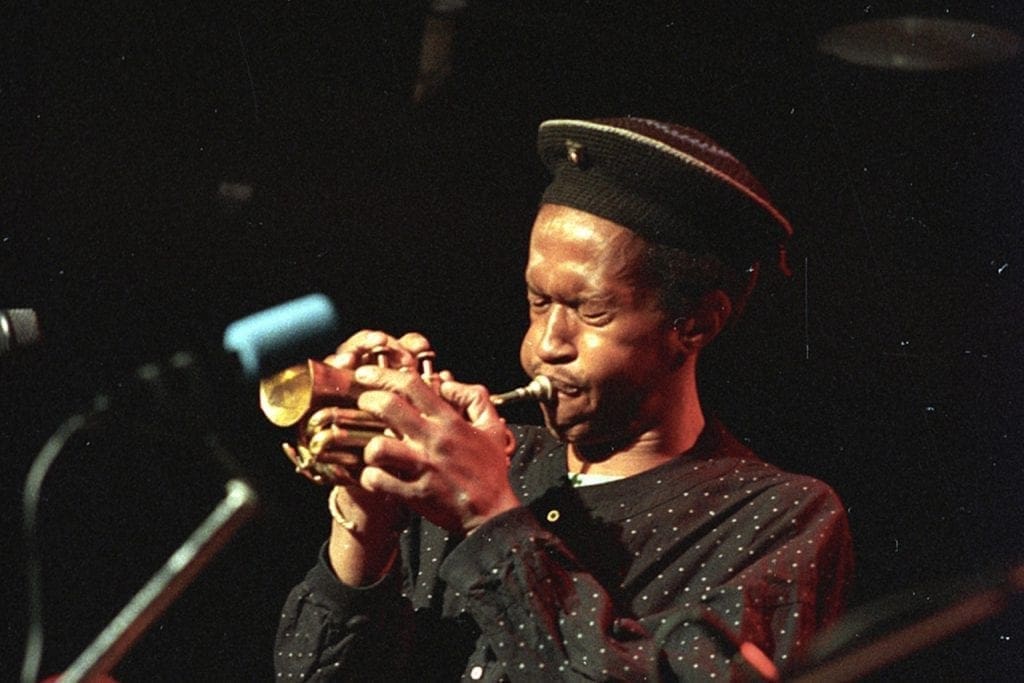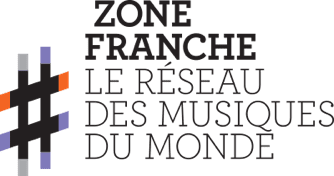Jazz was born a century ago in New Orleans before spreading all over the world and staking its claim as the source of the main forms of popular music that emerged after the war. Still today, jazz remains “Creole” music at its best, both artistically and historically, and the privileged vector of the “Poetics of Relation” so beloved of the Martinican poet Édouard Glissant. Expanding its territories beyond all measure by multiplying shifting zones of exchange and friction at its borders, where styles and genres intermingle to create new hybrids, jazz appears as a privilege space where the composite and syncretic beauty of our globalised humanity comes into its own.
Kinships and filiations
Opening itself up to Afro-Cuban rhythms in the mid-1940s and providing a lasting influence on the direction of Latin and Caribbean music in return, throughout its history jazz has constantly ventured beyond its idiomatic borders, soaking up other traditions in search of both kinships of identity (from Cuba to Brazil) and more fantastical filiations (Africa in all its states).
Following the example of pioneers such as the pianist Randy Weston – who exuberantly celebrated the historical, aesthetic and political links between African independence and black America committed to the civil rights struggle in 1960, with “Uhuru Afrika” – many musicians would set out on a “homecoming”. These jazz musicians made the link to the land of their ancestors one of the main imaginary and aesthetic “horizons” of their music. Art Blakey, Max Roach, Archie Shepp and the Art Ensemble of Chicago – among others! – would play an active part in this fertile dialogue between jazz and traditional music, generating forms of musical crossbreeding of great originality in return, whether in South Africa, Ethiopian or Nigeria, with Fela Kuti’s afrobeat.
A new Esperanto
From the 1970s, under the particular impetus of trumpeter Don Cherry – initiator and catalyst of a libertarian “world music” with no clear stylistic roots – jazz would considerably expand its areas of dialogue, becoming, for a multitude of musicians of different origins and cultures, a kind of Esperanto. This new language allowed them to identify with each other, unite and, depending on the circumstances, undertake processes of emancipation from Western cultural colonialism or revive forms constrained by tradition through confronting them with free improvisation. Argentinian saxophonist Gato Barbieri made his “Latin free jazz” the expression of his Third World convictions, while the Tunisian oudist Anouar Brahem modelled himself on the collaboration between John McLaughlin and the Indian musicians of the group Shakti to reform traditional Arab music.
Nowadays, these processes of cultural mixing and formal hybridisation have become so widespread as to constitute a new Vulgate for the young contemporary (post)jazz scene, more stylistically fragmented and disparate than ever. It strays into electro, hip hop, contemporary music, rock, and folklore of varying degrees of fantasy.
“Ancient to the Future”
Nevertheless, many musicians are concerned about their history and feeling indebted to a kind of filiation in need of honouring. With this in mind, they continue in good conscience to celebrate the emancipatory dimension of improvisation by developing worlds that reflect both on their anchoring in musical traditions, by referring to their African Caribbean origins, and their attachments to libertarian and mixed jazz forms inherited from the great free melting pot of the 60s and 70s.
This is true, for example, of the Malian keyboard player Cheick Tidiane Seck who, 25 years after his album Sarala – a collaboration with the pianist Hank Jones – has today reactivated his ambitions to fuse jazz and African music through a vibrant tribute to the flamboyant universe of the great Randy Weston. Inviting an audience of talented musicians, all involved in this “homecoming”, Cheick Tidiane Seck dares to go wild with stylistic overlaps based on a few favourite themes such as the emblematic “Timbuktu”. They mix Gnawa and sub-Saharan rhythms, contemporary sounds and unbridled improvisation in a great spiritualist communion around the tutelary power of the African matrix.
In a similar spirit, the young West Indian pianist Jonathan Jurion has set out to re-envision, in the light of his “Creoleness”, the lyrical and melancholic world of saxophonist Marion Brown, a 1970s Afro-American free jazz figure who was as legendary as he was secret. Choosing from his vast repertoire of themes compatible with the ancestral rhythms of Guadeloupean gwoka, dressing them up in light and colourful fabrics typical of Caribbean music, Jonathan Jurion and his musicians reclaim, with complete freedom, the fragile and bittersweet poetry of the poet of the saxophone while magnifying his fiercely artistic independence.
These two projects, released by the brand-new Komos label, are perfect examples of the trans-generational and transcultural movement that, since coming into being, has been constantly projecting jazz beyond itself in an ever-renewing quest for its origins. The fact that its imprint can be regularly and fleetingly found in these fruitful dialogues, while music from all over the world continues to draw on the modernity of its language to revitalise its traditions in return, suggests that these exchanges are unlikely to fizzle out anytime soon.


